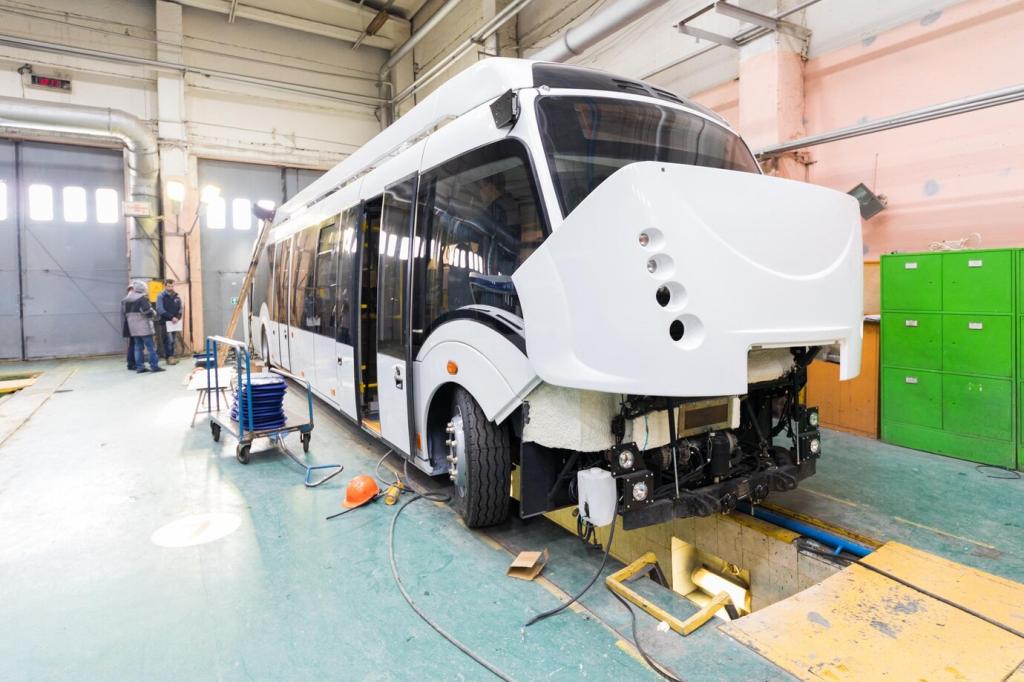Sustainability and the Role of Electric Autonomous Vehicles
The growing concern for environmental sustainability has propelled innovation across various industries. One of the most significant advancements is the emergence of electric autonomous vehicles (EAVs), which promise a transformative impact on both urban mobility and ecological preservation. This page delves into how EAVs intersect with sustainability, examining their potential to reduce emissions, increase efficiency, reshape urban planning, and foster a more responsible transportation ecosystem.
Reducing Greenhouse Gas Emissions
Unlike conventional vehicles that rely on gasoline or diesel, electric autonomous vehicles function entirely on electric power, resulting in zero direct tailpipe emissions. This attribute is crucial in curbing the adverse effects of air pollution that plague urban environments worldwide. By removing harmful exhaust outputs such as nitrogen oxides and particulate matter, EAVs contribute to improving overall air quality and reducing public health risks associated with vehicular pollution. Over time, the widespread integration of such vehicles can dramatically lower a city’s carbon footprint and help achieve ambitious international climate benchmarks.
Enhancing Urban Mobility
Traditional roadways have long struggled with congestion, wasting countless hours and significant amounts of fuel daily. Electric autonomous vehicles wield the potential to dramatically improve traffic flow through their ability to communicate with each other and with city infrastructure. Coordinated EAV fleets can anticipate and respond to real-time road conditions, prevent bottlenecks, and minimize unnecessary stops and slowdowns. The aggregate effect of these improvements not only enhances commuter experiences but also leads to higher productivity and reduced environmental impact from idling vehicles.
One of the hallmarks of EAVs is their capacity to be deployed as shared, on-demand mobility services. Autonomous fleets can dynamically match supply with fluctuating demand, offering personalized and efficient transport solutions for residents and visitors alike. This adaptability reduces the need for private vehicle ownership, supports multi-modal journeys, and helps extend transportation options to underserved communities. By reducing the number of vehicles needed to satisfy urban mobility demand, shared EAV models also help cut down on resource use and waste, making cities greener and more accessible.
Electric autonomous vehicles can seamlessly bridge gaps in conventional public transit systems, creating flexible solutions to the perennial challenge of first- and last-mile connectivity. By integrating analytics and route optimization, EAVs can serve as efficient feeders to mass transit hubs, ensuring higher ridership and less reliance on energy-intensive private cars. This integration strengthens the overall resilience of urban mobility networks while fostering greater equity by expanding access to reliable transportation for all citizens—a fundamental pillar of sustainable urban development.

Transforming Infrastructure and Urban Design

Reduced Parking Requirements
Autonomous fleets, especially when deployed in shared-use models, dramatically lessen the demand for parking infrastructure in urban cores. Unlike privately owned vehicles that remain stationary for most of the day, EAVs can continuously cycle through pickups and drop-offs, spending little time idle. This shift opens vast amounts of land that can be repurposed for parks, affordable housing, or community spaces, enriching city life while curbing urban sprawl. The environmental implications of lower parking demand include minimized impervious surfaces, which helps reduce stormwater runoff and urban heat island effects.

Flexible Street Design
Traditional city streets have been overwhelmingly designed for the movement and storage of private vehicles. The rise of electric autonomous vehicles introduces an opportunity to reclaim and reconfigure road space for multiple users and purposes. With fewer cars on the road and smarter traffic management, cities can allocate more space to dedicated cycling lanes, pedestrian zones, and green corridors. This transformation encourages active transportation and fosters a more vibrant, healthier urban environment. Moreover, it aligns with sustainable city planning principles, creating spaces that prioritize people over vehicles.

Smarter Infrastructure Investments
The successful deployment of EAVs will depend heavily on the adaptation and enhancement of urban infrastructure. Investments in smart traffic signals, charging stations, and digital connectivity are essential to support seamless vehicle operation. However, the efficiency gains from autonomous fleets can also reduce the need for costly road expansions and ongoing maintenance associated with heavy private car use. By redirecting infrastructure funding towards intelligent, adaptable systems and resilient public spaces, municipalities can better meet sustainability targets while providing long-term cost savings to taxpayers.
